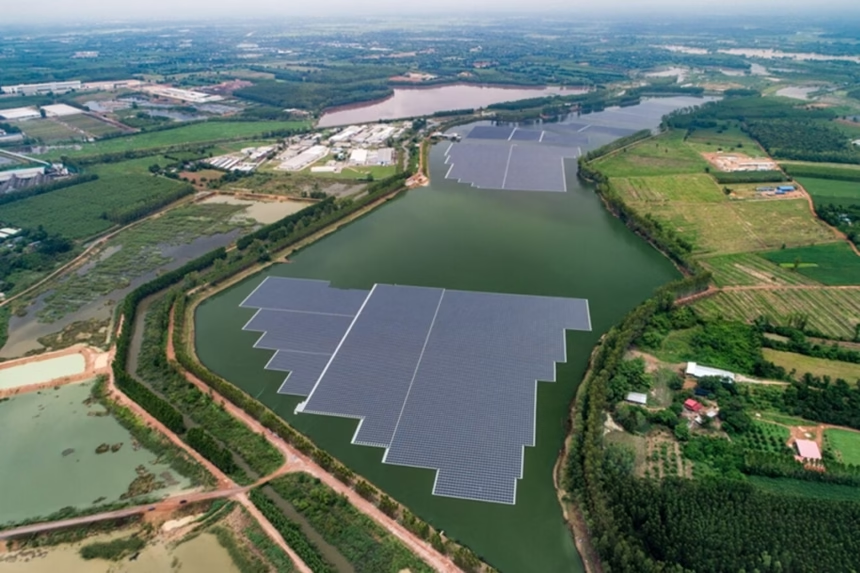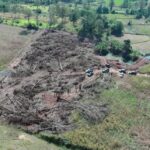Thailand is stepping into 2025 with real momentum. Big new projects, a clear national direction, and smarter grids are turning clean power from promise to practice. If you are watching renewable energy Thailand 2025, Thailand solar projects, floating solar Thailand, smart grid Thailand, or Thailand energy policy, this guide brings it all into focus.
The shift is visible in Bangkok’s rooftop solar push, EGAT’s floating solar at Sirindhorn and Ubol Ratana, and national plans that guide growth through 2037. The goal is simple: cleaner power that is reliable and fair for homes, farms, and small businesses. You will see the policies behind it, the projects to watch, the tech that keeps it steady, and the steps you can take this year.
Why now? 2025 is a turning point. Costs are down, policy is clearer, and tools like smart meters and batteries are scaling up. Stick around for clear takeaways and simple next steps at the end.
Thailand’s 2025 Clean Energy Goals and the Policies Behind Them
Thailand’s clean energy push is guided by two pillars, the Power Development Plan (PDP) and the National Energy Plan (NEP). Together, they set the path through 2037. Think of them as the map and the milestones for how Thailand adds renewables, upgrades the grid, and keeps bills in check.
First, the big picture. The NEP sets a higher target for renewables across the whole energy system by 2037. The PDP shapes how electricity will be made and managed. The direction is clear: more solar, wind, and storage, and less dependence on fossil fuels over time. This shift supports cleaner air, less import risk, and steadier prices.
These plans are designed to speed up real projects. Simpler permits, targeted incentives, and smarter operations help rooftop solar on homes and malls, utility-scale farms in sunny zones, and wind and biomass in rural areas. Government programs in 2025 also push community solar and on-farm solar water pumps, so the benefits spread beyond big cities.
Reliability remains a core focus. Grid operators are adding better forecasting for solar and wind, modern control systems, and storage. This helps keep the lights on during cloudy hours and evening peaks. Over time, these improvements reduce the need to run fossil plants at high cost during tight periods.
For a broader view of Thailand’s climate path, including energy, transport, and industry, see Thailand’s 2050 Carbon Neutrality Roadmap and risks explained in this clear guide: Thailand’s 2050 Carbon Neutrality Roadmap.
PDP and NEP targets for 2037 explained in plain language
- PDP stands for Power Development Plan. It guides how Thailand builds and runs power plants, lines, and storage.
- NEP stands for National Energy Plan. It covers the whole energy system, from electricity to fuels and efficiency.
Direction through 2037:
- The NEP points to about half of total energy from renewables by 2037, with a policy target of 51 percent.
- The PDP plans to lower natural gas’s share in electricity to around 41 percent by 2037, while raising solar, wind, hydro, and storage.
Why it matters:
- Cleaner air and better health in cities and industrial areas.
- Energy security, with less exposure to global fuel price swings.
- More stable power prices over time as fuel risk drops.
Incentives that speed up solar and wind in 2025
Thailand supports renewables with a mix of tools:
- Feed-in tariffs that pay a fair rate for clean power sent to the grid.
- Tax incentives that trim upfront costs for systems and equipment.
- Simpler permits that cut wait times for rooftop and ground solar.
Who benefits:
- Households save by using solar power during the day.
- SMEs and shops cut daytime peak bills and gain predictability.
- Commercial buildings add solar to offset cooling loads.
The result is faster timelines, lower total costs, and more projects starting construction in 2025.
What is sector coupling, and why does it matter in Thailand
Sector coupling means linking clean electricity with transport, industry, and agriculture. It helps us see more renewable power with less waste.
Everyday examples:
- Charge EVs during sunny hours at home or work.
- Power cold storage for fish and produce with daytime solar.
- Run irrigation pumps when the sun is high.
- Use smart controls to heat or chill water tanks during the day.
This smooths demand, absorbs more solar, and reduces strain on the grid.
Reliability and bills: what changes for households and SMEs
Fears about flickering power when clouds roll in are real. The response is also real. Grid upgrades, forecasting, storage, and time of use tools are coming together in 2025. Over time, that means steadier power and fairer pricing.
Simple steps to benefit:
- Get a basic energy audit to find quick savings.
- Shift some appliance use to sunny hours.
- Ask your utility about smart meter features and time-based plans.
- If you add rooftop solar, right-size your system for daytime use first.
Breakthrough Projects to Watch in 2025: Solar, Hydro, Wind, and Biomass
Projects turn policy into everyday change. Here are the ones to watch in 2025 and why they matter.
Bangkok Solar City Initiative: rooftop solar goes mainstream
Launched in November 2025, the Bangkok Solar City Initiative aims to bring rooftop solar to homes, shops, and offices across the capital. It supports Bangkok’s carbon neutrality target for 2030 by reducing peak demand, lowering bills, and adding clean power where people live and work.
Practical wins:
- Lower monthly costs through daytime self-use.
- Cooler roofs thanks to shading from panels.
- Less strain on the grid during hot afternoons.
Residents and SMEs can check eligibility, talk to licensed installers, and explore net billing options. Start with your roof condition and sunlight access, then gather a few quotes.
Floating solar on dams: how hybrid solar hydro boosts power at Sirindhorn and Ubol Ratana
EGAT’s floating solar panels pair with existing hydropower at key dams. Sirindhorn Dam hosts about 45 MW of floating solar. Ubol Ratana Dam adds about 24 MW. Solar provides daytime energy, while hydro fills gaps and ramps when clouds pass, which makes output smoother.
Extra benefits:
- Lower evaporation on reservoirs.
- No land use tradeoff with farms or forests.
- Shared grid links keep costs down.
Utility-scale solar and smarter forecasting by EGAT
Large solar farms are expanding in high-irradiance zones. EGAT’s forecasting centers use weather data and AI-driven tools to predict solar and wind output. Better forecasts mean better balance, fewer surprises, and more room on the grid for clean power. During storms, operators can plan and reduce the need for expensive backup.
Wind corridors and farm waste biomass lift rural economies
Wind projects are growing in coastal and upland corridors with strong resources. Biomass plants use local farm waste, such as rice husks and bagasse, to generate steady power. The impact is local jobs, new income streams for farmers, and better waste management. Cleaner air follows when waste is turned into useful energy rather than burned in the open.
Smart Grids, Storage, and EVs: The Tech That Keeps Clean Energy Steady
Solar and wind are variable. Smart tools make them dependable. The 2025 focus is on digital grids, energy storage, and EV charging that lines up with solar output.
Digital grid upgrades and smart meters balance supply and demand
Smart meters help people see and shift their use. Demand response programs reward moving flexible loads, like water heating or cooling, into sunny hours. For example, set your dishwasher or laundry to run midday. Multiply that across a city, and the grid absorbs more solar without stress.
Energy storage in Thailand: batteries and pumped hydro
Batteries store extra solar from the day for evening use. They kick in fast when clouds arrive, which supports stable voltage and frequency. Pumped hydro works like a water battery. Water is pumped uphill when there is extra power, then released through turbines when demand rises. Both tools reduce the need to fire up fossil plants during peaks, and they improve reliability during storms.
EV charging grows with cleaner power.
EV charging fits the sector coupling story. Charging at work or home during daylight uses the solar surge. Public and fleet charging stations are spreading along highways and in cities. Simple tips: schedule daytime charging when possible, and size home chargers to your panel capacity. For businesses, plan fleet charging around operations and peak solar hours to manage costs.
What Thailand’s Green Power Shift Means for People and Business in 2025
The energy transition is not just for utilities. It is about daily life, lower bills, and new chances to grow.
Lower bills, energy independence, and rooftop solar payback
Rooftop solar cuts bills through self-consumption. In areas with fair export rules, you can earn credit for extra power sent to the grid. Tips to boost savings:
- Right-size your system to match daytime use.
- Run appliances when the sun is strong.
- Keep panels clean and shaded by nothing but the sun.
- Consider future battery add-ons as prices fall.
Jobs and skills in the clean energy economy
New roles are growing fast:
- Solar installers, electricians, and technicians
- Engineers and project managers
- Data analysts for forecasting and grid operations
- Energy auditors and building retrofit teams
Short courses and certificates help students and career switchers move in. Hands-on apprenticeships are a strong entry path.
Opportunities for farmers: biomass, solar on farms, and community energy
Farmers can earn from biomass supply agreements using rice husks, bagasse, and other residues. On-farm solar can run pumps, dryers, and cold storage, cutting diesel costs. Community energy models let neighbors share power and benefits, which keeps value local.
Simple steps to get started this year
- Review your last 12 months of power bills.
- Check your roof or land for shade and space.
- Gather quotes from licensed solar installers.
- Ask your utility about interconnection steps and smart meter options.
- Look for current incentives and soft loans.
- Plan for future battery or EV charging, even if you add it later.
Conclusion
Thailand’s green power story is accelerating. National plans through 2037 set clear targets. Projects like Bangkok Solar City and EGAT’s floating solar at Sirindhorn and Ubol Ratana make the shift visible.
Smarter grids, better forecasts, and storage improve reliability, while public and private investment grow. Take a simple step into this future, explore rooftop solar, energy efficiency, or a clean energy career in 2025. The path to a cleaner, steadier energy system is open to everyone.














